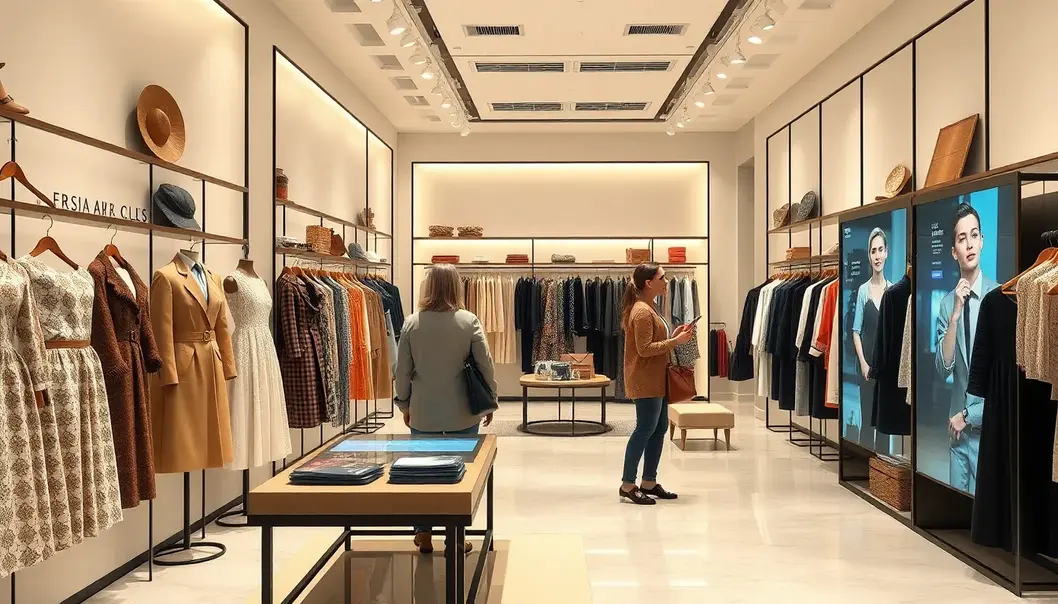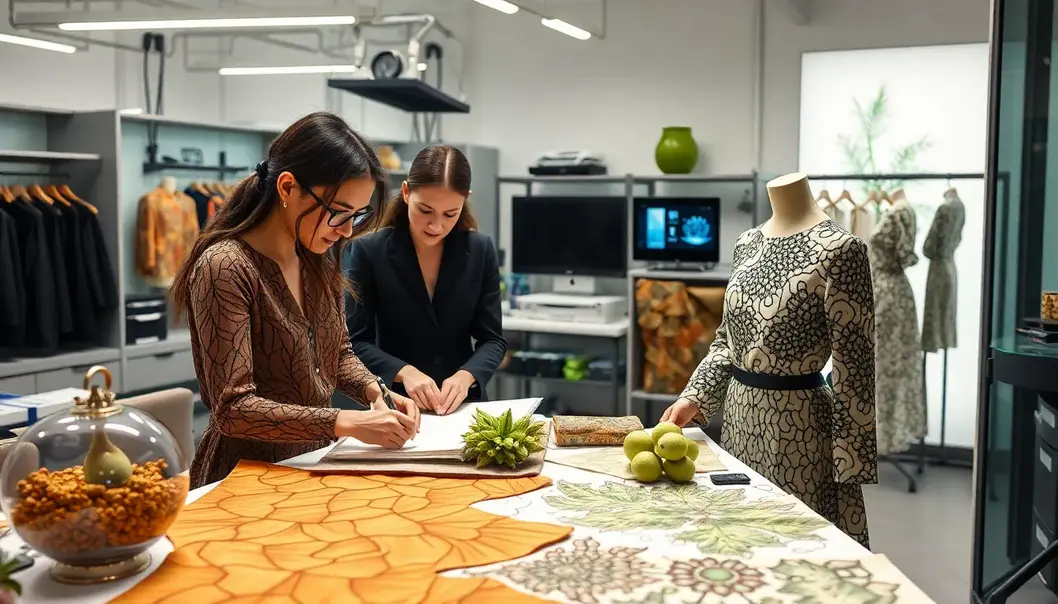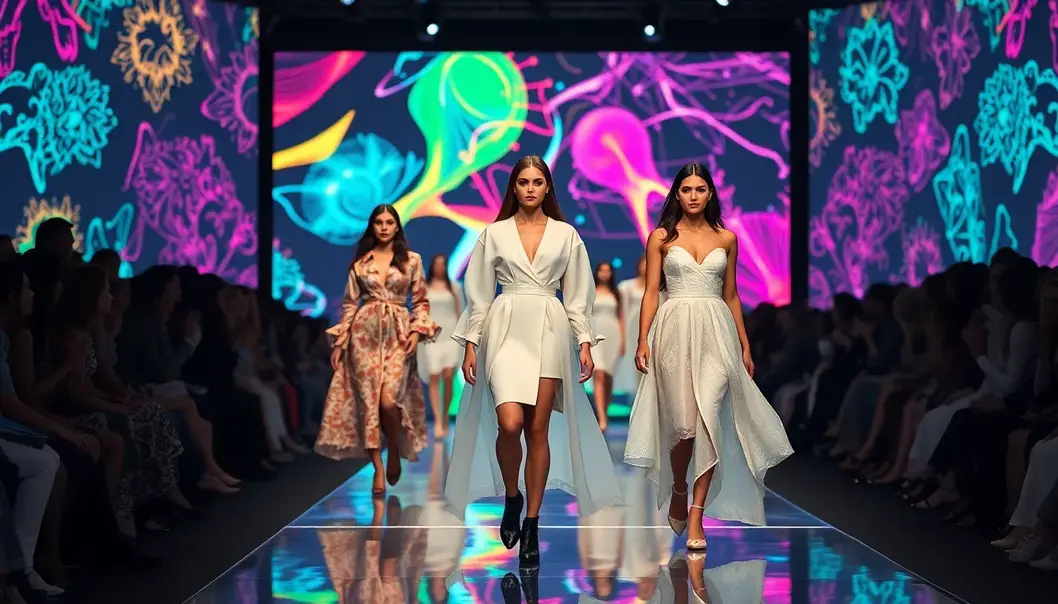As we move into 2025, fashion lovers and creative trend analysts are poised to witness a paradigm shift. This era promises an intersection of technology and sustainability, leading to an exquisite blend of style and substance. From hyper-personalized wardrobe choices to a resurgence of vintage aesthetics, this year’s trends are not only innovative but deeply connected to our cultural zeitgeist. With an eye towards the future, designers are crafting pieces that celebrate individuality and embrace a wider array of materials, all while paying homage to timeless elegance.
Resurgence of Vintage and Personal Customization

As fashion strides into 2025, there is a compelling resurgence of vintage aesthetics intertwined with personal customization. This revival is not merely nostalgia but a sophisticated fusion of past styles with the personalization potential offered by modern technology. Vintage fashion speaks to a timeless elegance that resonates with contemporary consumers who crave distinctiveness and authenticity.
In this era, technology plays a crucial role in shaping the bespoke fashion landscape. Advanced digital tools allow consumers to create unique pieces, reminiscent of bygone eras, tailored to their specific desires. This transformative capacity is powered by 3D printing, AI-driven design platforms, and virtual reality simulations, enabling users to marry personal style with classic influences.
Through digital integrations, fashion lovers can easily translate vintage designs into modern garments. AI-based applications serve as virtual stylists, analyzing past and present trends to conjure customized styles that reflect individual tastes. These platforms employ complex algorithms to adapt vintage patterns into wearable, contemporary pieces, ensuring that each creation is genuinely one-of-a-kind.
Culturally, this trend signals a shift towards individual expression through clothing, harking back to when personal style was a meticulous art. In contrast to fast fashion’s cookie-cutter approach, personalization represents a return to fashion as a craft, celebrating heritage and historical influences. The shift is particularly evident in the resurgence of DIY fashion culture, where consumers take pride in handcrafting unique wardrobe staples.
The rise of this vintage craze also answers a growing consumer demand for sustainability. With digital tools, it’s easier to refurbish and repurpose vintage materials, minimizing waste and promoting circular fashion. Consumers are increasingly valuing durability over disposability, seeking long-lasting quality in their unique vintage-inspired pieces.
Furthermore, this personal customization trend offers designers a fresh canvas for creativity. By revisiting retro styles, designers are challenged to reinterpret and innovate, pushing boundaries while embracing tradition. This harmonious blend paves the way for new narratives in fashion that celebrate the past and embrace the future.
In embracing vintage aesthetics through personalized creations, technology empowers consumers to express their identities while appreciating historical beauty. The result is a fashion landscape rich with diversified styles, steeped in history and modernized through technology. As customization becomes the new norm, fashion remains dynamic and perpetually evolving, mirroring the varied tapestry of personal identities and cultural heritage.
Sustainable Luxuries and Biomimicry

In 2025, fashion finds itself intertwined with the principles of biomimicry, a discipline that draws inspiration from nature to solve complex challenges. Designers are increasingly turning to this approach to create materials that are not only aesthetically pleasing but also environmentally sustainable. These innovations are reshaping both high fashion and everyday attire, emphasizing a blend of luxury with eco-consciousness.
Biomimicry allows designers to mimic nature’s efficiency and adaptability, resulting in fabrics that offer both durability and elegance. For instance, many contemporary textiles are inspired by the intricate structures of spider silk or the water-repellent surface of lotus leaves. These nature-based designs enable the production of materials that are lightweight yet remarkably strong, providing a perfect balance for striking garments.
One of the most profound advancements lies in the development of bio-fabricated textiles. By engineering materials at a cellular level, designers can create textiles that do not rely on traditional agriculture or animal products. This method significantly reduces the carbon footprint associated with garment production, eliminating dependencies on water-intensive crops like conventional cotton. The environmental benefits are profound, as these fabrics are not only biodegradable but often require less energy to produce.
Furthermore, algae-derived textiles present an exciting frontier. These fabrics harness the carbon-absorbing capabilities of algae, offering a carbon-negative option in a world that increasingly prioritizes climate action. This not only suits the luxury sector, where exclusivity and pioneering technologies drive consumer appeal, but also appeals to mainstream fashion, which seeks to integrate sustainability into its core.
High fashion brands are adopting these sustainable luxuries, driven by a burgeoning clientele that values ethical production. Gowns crafted from bioengineered silk or jackets woven from plant-derived polymers exemplify how exclusivity and conscious choice can coexist in harmony. Meanwhile, everyday fashion benefits from these technologies, making sustainable style accessible to all.
Advancements in textile innovation underscore a pivotal shift in the fashion industry, where sustainability and luxury are no longer opposing concepts but partners in creativity. The adoption of biomimicry catalyzes this evolution, offering a template for others to follow. As we look towards a future where fashion plays a crucial role in environmental stewardship, embracing these innovations will be key.
The impact of these changes is not limited to production. They influence the entire lifecycle of clothing, from manufacturing to eventual disposal. As consumers become increasingly aware of how their choices impact the planet, the demand for eco-friendly luxury items is expected to rise. This trend encourages brands to explore further innovations, ensuring that the elegance of 2025 aligns with a vision for a sustainable future.
While the previous chapter explored how technology aids in personal customization, this chapter demonstrates that the true technological revolution in fashion lies in harmonizing luxurious living with nature’s brilliance. The seamless integration of biomimicry into textiles is a testament to the possibilities of innovative design, offering a sustainable path forward that honors our planet as much as our aesthetic ambitions.
Final words
Fashion trends in 2025 promise to not only be visually stunning but also deeply meaningful, combining the nostalgia of vintage fashion with cutting-edge technology and sustainability initiatives. These advancements not only reflect technological prowess and environmental consciousness but also underscore an era where individuality is paramount. As the fashion world continues to evolve, embracing these trends allows for an enriched and conscientious wardrobe experience.
Discover the future of fashion with exclusive access to cutting-edge trends and designs. Join us and redefine your style.
Learn more: https://www.fashionfuture2025.com
About us
FashionFuture2025 offers insights into the latest fashion trends, innovative designs, and sustainable practices redefining style for the modern world. Join our community for exclusive access to trend reports, designer collaborations, and eco-friendly fashion solutions.



